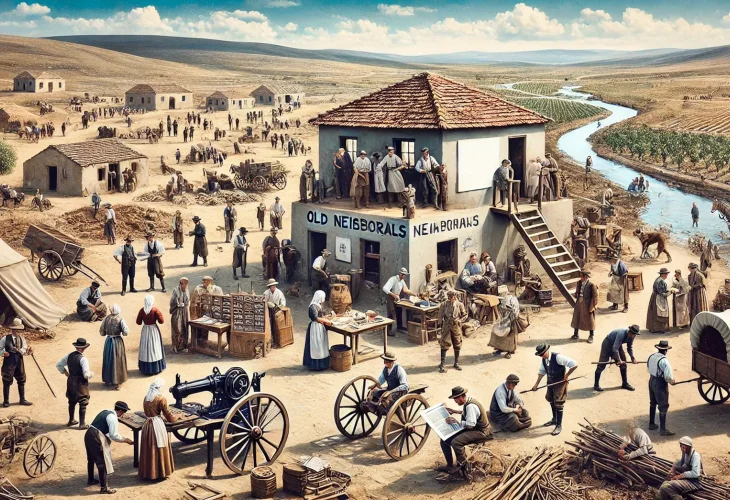The Hidden Foundations of Early Zionist Communities
The first secular aliyah, the Bilu'im, was entirely supported by donations. Six out of the first seven colonies were funded by Baron Rothschild. Gedera was rejected by him due to its roots in nihilism, and financially could not stand alone.

The concept of "haluka" is portrayed in historical literature as a reflection of the Old Yishuv's dependence on charity.
However, history shows that fundraising from abroad was the foundation for all inhabitants of the land at the time. As Prof. Eliav writes, "It's noteworthy that not only did Jews rely on support from their brethren, but Christian residents and their institutions also survived for a long period, constantly aided by substantial overseas funds that far exceeded 'haluka' funds."
The Land of Israel was an economically stagnant region, necessitating European religious support even for Christians.
Even the Chovevei Zion society, which emphasized labor and independence, operated on a similar method of fund-raising. Eliav notes, "Chovevei Zion, which criticized the 'haluka' method, adopted a similar support system afterward. G. Karsel correctly noted that the central society of Chovevei Zion was named 'Support Society', and the first settlers' calls for overseas support were not much different from traditional 'haluka' proclamations, aside from their modern language and target audience."
The Bilu'im, the first secular aliyah, entirely relied on donations. Six of the first seven colonies were sustained by Baron Rothschild. Gedera was rejected by the baron due to its nihilistic character, and indeed could not economically sustain itself at the time.
Understandably, all Zionist organizations - the Joint, the Jewish Agency, and others - continually relied on fundraising, even long after the establishment of the state, which itself depends on American aid...
One of the renowned hospitals established in Jerusalem was founded by Dr. Rothschild in 1854, whose director, Dr. Neumann, "shaped the institution's patterns, ensuring its distinctly religious character. A place of worship was built nearby."
Yet, the truth is that the Old Yishuv established several other hospitals.
In his article "The First Hospital in Jerusalem," Morgenstern demonstrates through newly discovered documents that, in 1857, the Sephardic community, along with the Hassidic sect, established a hospital in Jerusalem.
Back in 1844, the Perushim in Jerusalem initiated another hospital, known as "Bikur Cholim."
In 1879, the Sephardic community founded the "Misgav Ladach" society, which offered free medical aid to the sick. In 1888, the society established a hospital under the same name.
In 1905, the "Shaare Zedek" hospital was established in Jerusalem, also under religious management.
These hospitals operated and continue to operate according to halacha, exemplifying that a modern hospital can be managed while strictly adhering to religious commandments.
The term "Old Yishuv," given by Zionist immigrants to all preceding occurrences in the land, aims to falsely display that secular Zionists were the first to build and settle. It implies they established institutions and worked the land without previous efforts. This imaginary line artificially distinguishes between the religious and the secular, rather than between idleness and action.
The "Old Yishuv" built neighborhoods, established hospitals, encouraged aliyah, founded agricultural settlements, raised funds, revitalized wastelands, drained swamps, wielded arms, managed newspapers ("HaLevanon," "HaChavatzelet," "Yehuda and Yerushalayim," and more), and developed commerce and banking.
Referring to those from 1882 onward as the "First Aliyah" is condescending... That wave wasn’t the first. It followed a century of mass aliyot.
Prof. Eliav states: "The immigrant wave that surged from the early 1880s largely represented a different public from the existing Yishuv, beginning a new era. Naming this wave 'First Aliyah' unjustly overlooks prior aliyot that laid the foundation for renewed settlement, and aims to highlight the uniqueness of its motives and character."
In reality, even members of the 'First Aliyah' were mostly observant Jews; however, many did not merge with the existing Yishuv and established their own religious communities.

